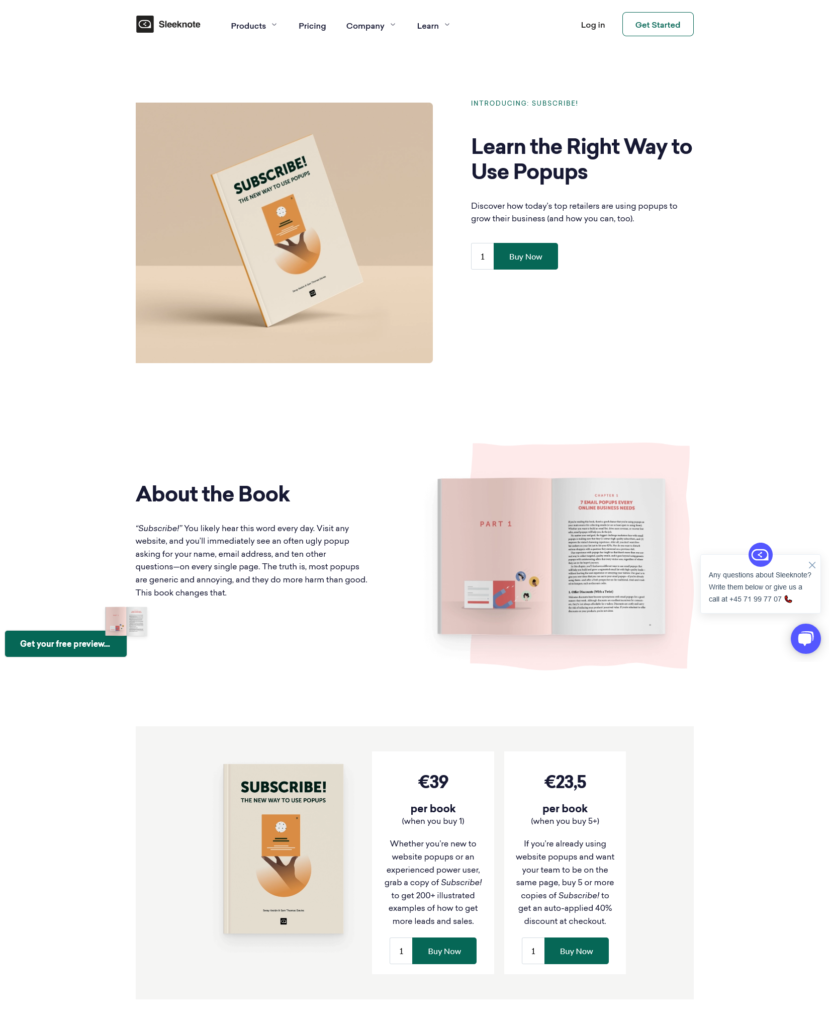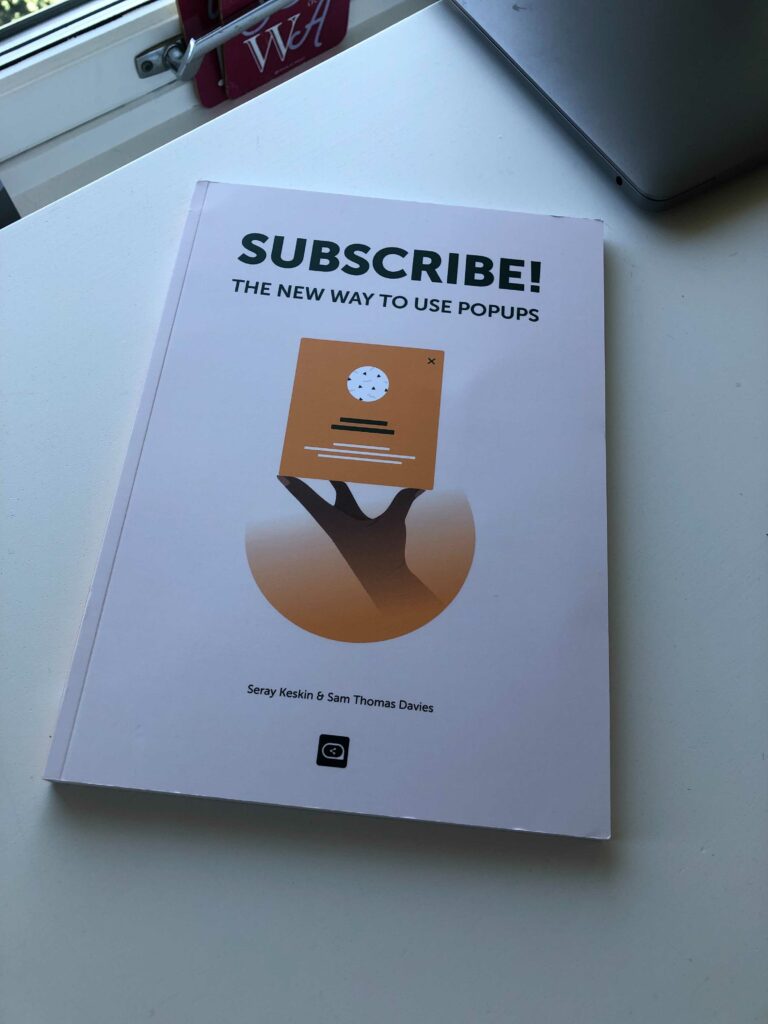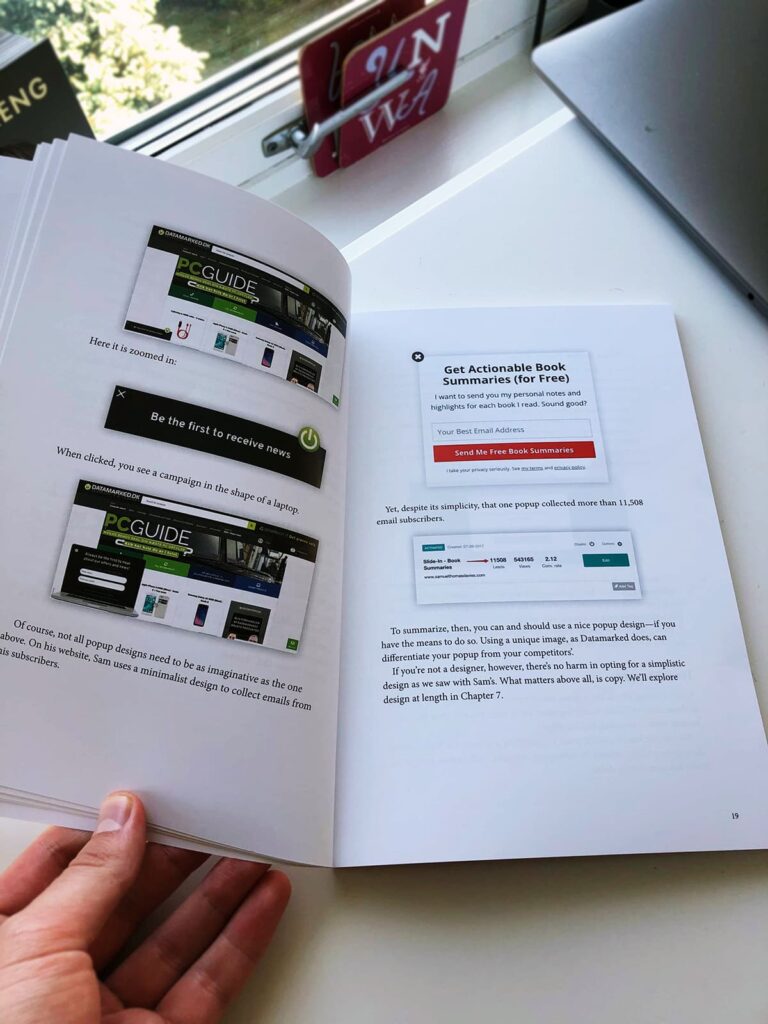Trine Huseby
Samlivsterapeut

- Arbeidsmusikk – tips

Brain.fm

Brain.fm går veldig offensivt ut og beskriver seg selv som “Functional music to improve focus in 15 minutes”. Etter å ha benyttet meg av dem i et års tid er jeg storfornøyd. Å kalle det “musikk” er litt bom. Du må lytte med headset, og det er fritt for vokal, gitar, trommer og alle musikalske elementer som stjeler fokus. Setter du på dette under første date så blir det også din siste, men til arbeidsdagen er det helt ypperlig for min smak.
Coffee Table Jazz
Tropical House
Soundtracks
Skyrim soundtrack
Rimworld soundtrack
Stellaris soundtrack
Oblivion soundtrack
Anno 1800 soundtrack
Eve Online soundtrack
- Kurs og sertifiseringer for markedsførere

Google, sertifiseringer og kurs
Kurs og sertifiseringer fra Google er et veldig naturlig sted å starte for enhver markedsfører. Det å øke kunnskapen og ferdighetene sine i verktøy som Google Analytics, Search Ads er på ingen måte feil.
Fundamentals of digital marketing
Google Search Ads 360 Sertifisering
Display & Video 360 Sertifisering
Campaign Manager Sertifisering
Google Analytics Qualitication
Google My Business
Shopping Ads Sertifisering
Google Ads Measurement Sertifisering
Creative SertifiseringHubspot Academy
På Hubspot Academy finner du en lang rekke relevante (og gratis) kurs.
Digital Marketing
Digital Advertising
Website Optimization
Youtube Marketing
Social Media Marketing
SEO sertifisering
Inbound Marketing
Content MarketingUdemy
På Udemy ligger det i skrivende stund over 10 000 kurs under kategorien markedsføring. I motsetning til Hubspot Academy og Google koster de aller fleste kursene her noen kroner. NB: Udemy har en forferdelig personifisert tilbudsmodell hvor du ved første besøk får slengt tilbud på typ 90% rabatt i ansiktet. Disse tilbudene vedvarer stort sett hele tiden selv om de har en countdown. Jeg har personlig aldri kjøpt et kurs til “full pris”, og det burde ikke du gjøre heller. Klarer du å se forbi den mildt sagt irriterende salgsmetoden så ligger det en del gode kurs her.
The BluePrint Training
Meget interessant SEO-kurs fra Ryan Stewart og hans team. Hovedkurset koster en liten formue, men man får like vel mange gode tutorials og maler hvis man melder seg på gratisversjonen.
Youtube
Youtube må ikke glemmes som en veldig god kilde til læring, det gjelder bare å finne de riktige kanalene. Her er noen forslag:
Ryan Stewart – SEO
Noah Kagan – Markedsføring og business
Google Analytics
Learn Google Spreadsheets
GaryVee – Markedsføring, SoMe og mye diverse - Hvor ofte bør man sende nyhetsbrev?
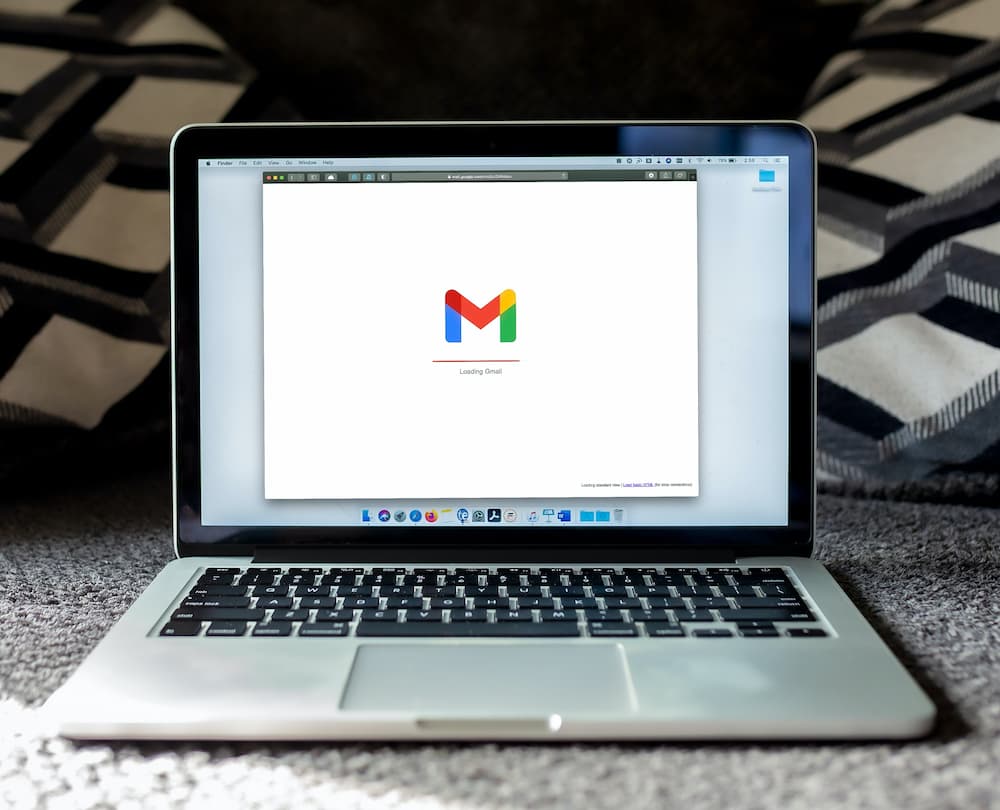
Lei av generiske svar som “det avhenger av bransje/målgruppe” eller “det finnes ikke et klart svar på det fordi blablabla”? Jeg også. Derfor tok jeg en gjennomgang av hvor ofte ulike aktører faktisk sendte meg nyhetsbrev i hele fjor. Her er det en salig miks av alt fra nettbutikker til influencere.
Gjennomsnittet for dette tilfeldige utvalget var 73 nyhetsbrev totalt i 2020, eller ca 1.4 per uke. Hvis du er mer opptatt av median enn gjennomsnitt så frykt ikke. Svaret er i såfall 54 totalt i 2020, eller ca 1 per uke.
Aktør Antall nyhetsbrev 2020 Steam 239 XXL 187 Think With Google 179 Proteinfabrikken 120 Netflix 120 Komplett 110 Udemy 108 Good For Me 106 Kitchentime 93 Tim Ferris 93 Great british chefs 72 Ark Bokhandel 70 Blizzard Entertainment 68 Norwegian Reward 55 Den Norske Turistforening (DNT) 53 Morgenlevering 47 Extra Leker 41 Nordnet 35 Trumf 33 Vimeo 31 Kiwi 30 Shopify 25 Obos 25 Bank Norwegian 24 Altibox 22 SAS Eurobonus 20 Steinberg 15 4sound 11 Ganske interessant, sant? Vil du ha mer interessant faglig påfyll innenfor emner som markedsføring, netthandel, webanalyse og den slags så meld deg på nyhetsbrevet mitt her:
- Hvordan bli sertifisert i Google Ads

Oppdatert juni 2021
En sertifisering innen en så kraftig plattform som Google Ads er aldri feil. Du kan velge hvilken del av Google Ads du ønsker å sertifisere deg i, og det tar ca 3-4 timer for hvert emne (Display, Search osv) og er gratis. Her er en rask guide:
- Klikk deg inn på Google Skillshop her og logg inn
- Trykk på Google Ads og deretter Google Ads Certifications
- Velg hvilken sertifisering du ønsker å ta, som f.eks Google Ads Search Certification
- Under “Study Google Ads Search” kan du se kursvideoene
- Når du er klar for å ta eksamen klikker du på “Google Ads Search Assessment”
Når du har tatt eksamen får du et sertifikat, som du kan bruke på LinkedIn slik:
- Logg inn på profilen din og trykk på “Add section” under profilbildet ditt
- Velg “Licenses & certifications”
- Legg til sertifiseringen
BAM! Ferdig!
Psst! Hvis du liker emner som Google Analytics, webanalyse, netthandel, konverteringsoptimalisering og markedsføring så anbefaler jeg at du melder deg på mitt helt egne og personlige nyhetsbrev her:
- Fra pop-ups til bok
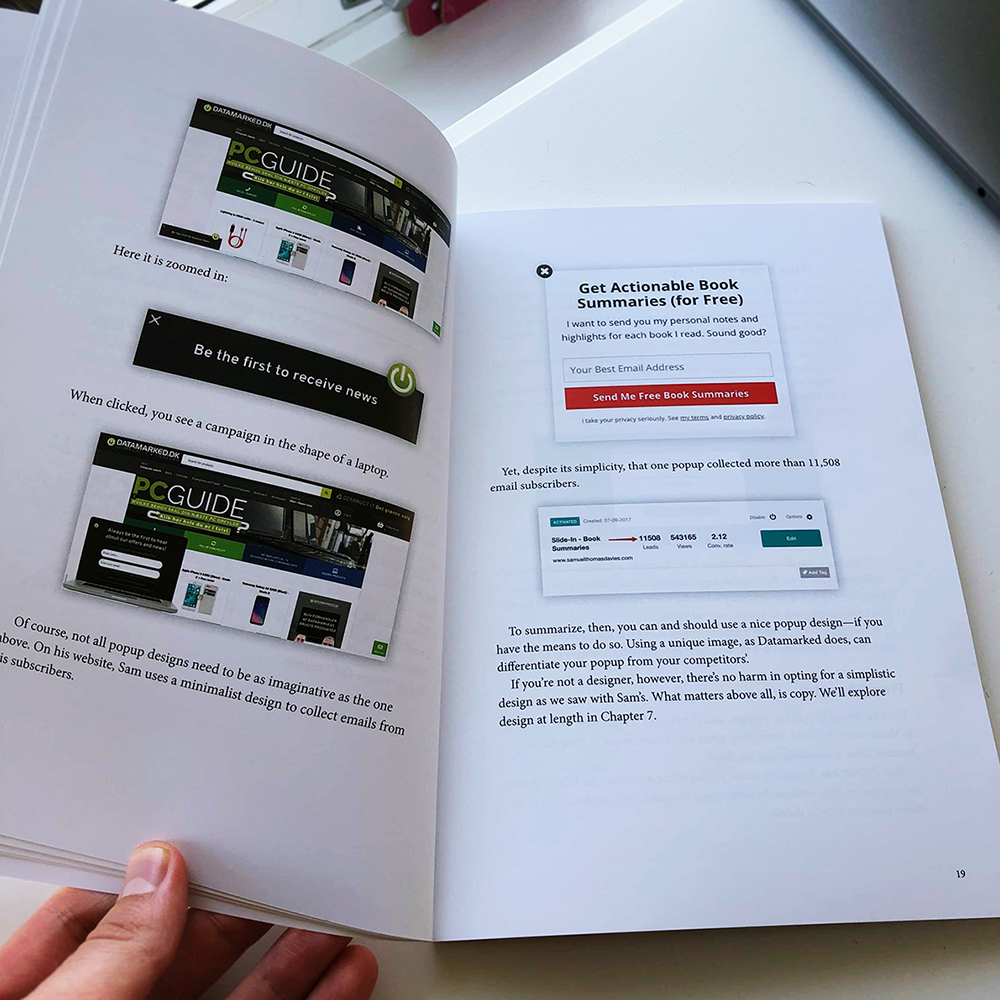
E-bøker, nyhetsbrev, blogger, whitepapers, PDF-er, infographics… det skorter ikke på digitale formater å levere innhold på. Det som da er gøy er når en heldigital aktør forsøker noe nytt – og tar i bruk gamle, fysiske virkemidler. Som en god, gammel bok.
Et av de mer fremoverlente selskapene jeg vet om, Sleeknote, slapp nylig en liten bombe: Sin egen bok! Som en såkalt “Sleeknote insider” fikk jeg den gratis, inkludert frakt. Tankene gikk umiddelbart til boken Never Lose A Customer Again, som hadde et godt poeng:
Defy customers’ preconceived expectations. Create contrast in experience. Online customers expect that every interaction will be online. Consider adding offline interactions to bring your company and experience into the tangible world. Sending something via mail feels almost old-school in comparison with online offerings, but this contrasting experience creates a remarkable interaction.
Les mine notater på Never Lose A Customer Again HER.
Her er måten de lanserte og promoterte boken på:
Nyhetsbrev
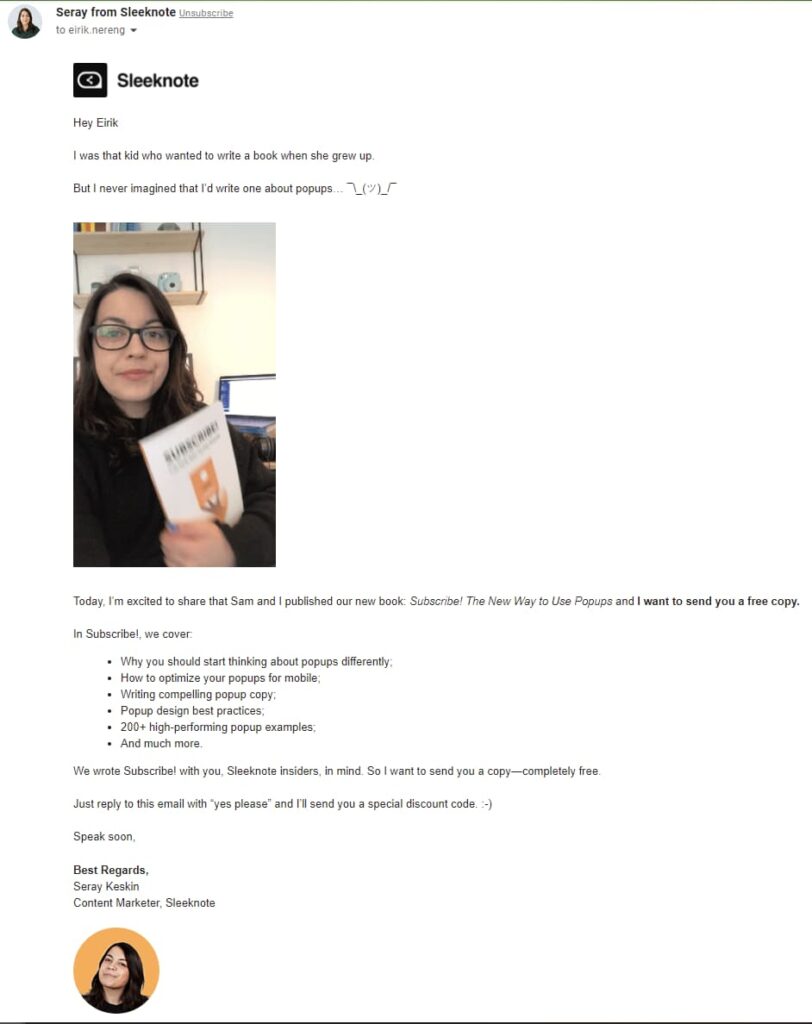
Pop-up
Landingsside
Boken
Gleder meg til å lese!
- How to invest in gaming #2: Embracer Group
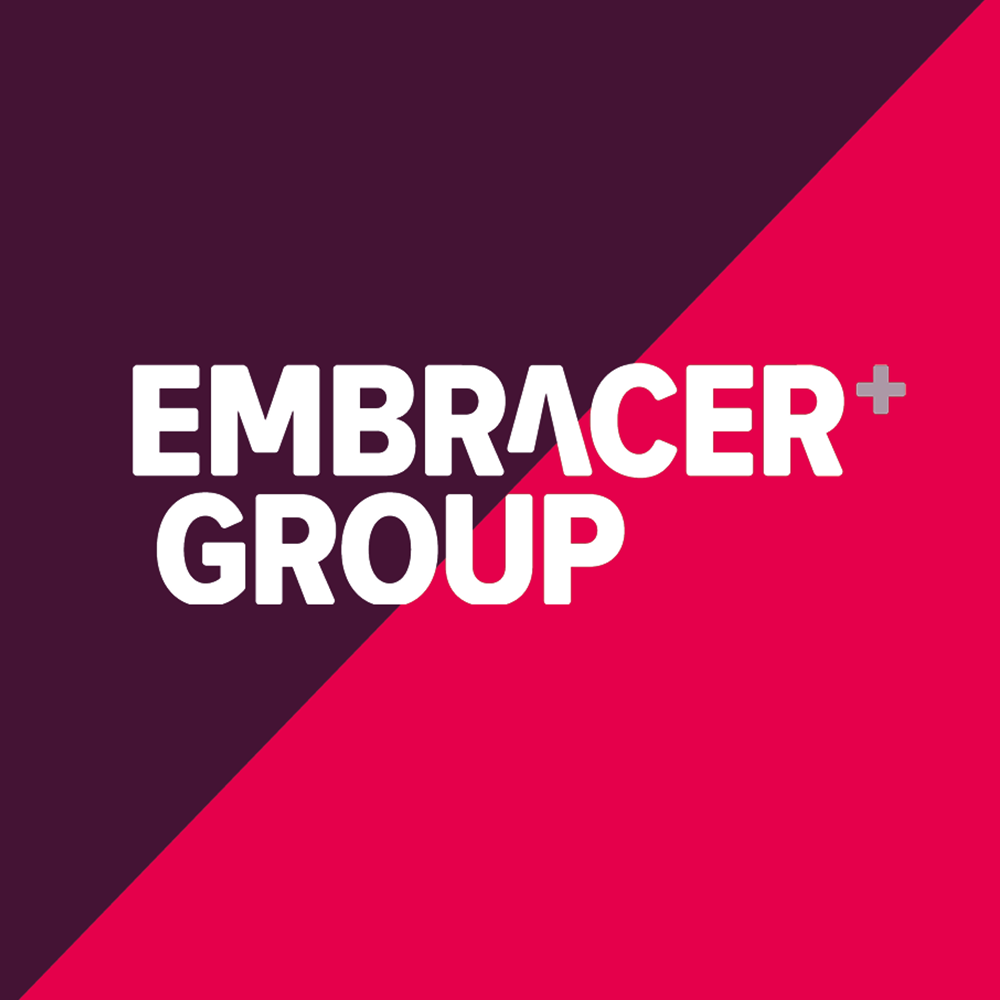
Sweden features an impressive line-up of successfull tech and gaming companies: Paradox Interactive, King (Candy Crush), SoundCloud, DICE, Mojang (Minecraft), Klarna, iZettle and Spotify to mention some. Then there is Embracer Group. This name only came to my attention half a year ago, but what an exiting company! Let’s dive right in.
Embracer Group (EMBRAC B – Sweden)
Stock price as of this writing: 255 SEK
Company valued at: 108 mrd SEK (13 billion dollars)Games
This is only a highlight of games. Their entire portfolio includes over 200 franchises.

THQ Nordic
- METRO
- Saints Row
- Dead Island
- Desperados
- Darksiders
- Destroy All Humans
- Wreckfest
- Kingdoms of Amalur
- Titan Quest
- Gothic
- ELEX

Koch Media (Deepsilver and Ravenscourt)
- Chivalry II
- Wasteland 3
- Iron harvest
- Outward
- Kingdom Come: Deliverance
- Yakuza
- Agents of Mayhem
- Dead Island
- Risen 3

Coffee Stain Studios
- Valheim
- Satisfactory
- Deep Rock Galactic
- Goat Simulator

Saber Interactive
- World War Z
- Mud Runner
- Snow Runner
- NBA2K
In addition to the mentioned IPs, Saber Interactive has also worked on a wide range of other games, like different versions of The Witcher 3, Crysis Remastered, Halo: The Master Chief Collection, Quake, and Vampyr.

Gearbox Entertainment
- Borderlands
- Homeworld
- Duke Nukem
- Borthers in Arms
Gearbox Entertainment has also worked on a number of other games you might have heard of, like Half-Life and Counter-Strike.
Deca Games
- Realm Of The Mad God
- Knights & Dragons
- Modern War
- Crime City
- Kingdom Age
Easybrain
- Sudoku.com
- Killer Sudoku
- Nonogram.com
- Pixel Art
- Jigsaw Puzzles
- Blockudoku
- Groovepad
Aspyr
Aspyr is first and foremost a developer specializing in porting games to different platforms. Most notably it has ported a good portion of the Sid Meier Civilization series to the mac.
Amplifier Game Invest
Amplifier does not develop games of their own, but functions (to my understanding) almost as an incubator for small game startups. They invest in small startups, and offers project management to their partners.
Strengths and opportunities
Vast portfolio of franchises
Just look at the list above. It’s not even conclusive. With over 200 franchises, 57 internal game development studios and 5 500 employees, Embracer Group dabbles in pretty much every genre on every platform. This brings diversity, flexibility, and also heavily increases the chances of creating best-selling games.
Just take Valheim, which just hit 3 million sales in less than three weeks! Satisfactory is another big hit from Coffee Stain Studios, with well over a million games sold.Adding to their diversity, their studios does not just focus on their own IPs, but are trusted partners of other giant game developers. Just take a look at Aspyr, which has ported over 20 titles (including DLCs) from 2K, owned by Take-Two Interactive.
Speaking of Aspyr, while doing this research I stumbled over rumours of Aspyr working on the new title for Star Wars: Knights of The Old Republic. If that turns out to be true, wow.Extreme focus on acquisitions and investment
Last autumn they announced in one single day that they had acquired no less than 13 companies. This february they did pretty much the same, dropping the news that they had acquired Aspyr, Easybrain and Gearbox Entertainment on the same day.The level of ambition is astronomical, which can be of great benefit for their investors. In december, they signed a credit facility contract, increasing their liquid funds to more than 11.5 billion SEK (1.4 billion dollars).
Weaknesses and threatsOverextension
With the huge amount of acquisitions comes huge amounts of responsibility. Embracer Group’s game studios are located all over the world, and leading 50+ companies with 5 500 people is no easy task.On top of this there seems to be a big focus on experimenting with completely new games and franchises. While a great opportunity, it will also lead to a lot of projects bleeding money. Embracer Group takes a very different approach than for example Paradox Interactive, which focuses mainly on developing big franchise “platforms” and then bombarding it with DLCs for years and years.
Final thoughts
I believe Embracer Group is an extremely interesting company with a level of ambition that is admirable. I think that ambition will either lead to very big success or very big failure. I have taken a small bet on the first, making it the biggest single stock in my small portfolio.
Interesting articles
- Gamepressure.com: The story of THQ Nordic
- Engadget.com: The Frankenstein Monster of video games
- How to invest in gaming #1: Paradox Interactive

While researching investment opportunities within the gaming industry, I decided it would be fun to create a series of articles with my notes. This is the first article, and dives into one of my favorite gaming companies – Paradox Interactive.
Paradox Interactive (PDX – Sweden)
Stock price as of this writing: 239.80 SEK
Company valued at: 3 057 680 000 USD (25.8 mrd SEK)
This swedish game developer and publisher became my most lucrative investment last year, with a 114% ROI. Paradox are primarily focused on the grand strategy genre, where they are a big player with games like Europa Universalis, Stellaris, Cities: Skylines, Hearts of Iron, Crusader Kings, Age of Wonders and Magicka. They also acquired the popular title Prison Architect last year, and are a successfull publisher for a variety of great titles: Steel Division, Tyranny, Surviving the Aftermath, Empire of Sin and Pillars of Eternity to mention some.
Game Studios
Paradox currently owns several different development studios in addition to their original Paradox Development Studio and its siblings:
Harebrained Schemes: Battletech, Necropolis, Shadowrun series, Golem Arcana, Strikefleet Omega, Crimson: Steam PiratesIceflake Studios: Surviving the Aftermath, Ice Lakes, Race Arcade, Premium Pool Arena, Target Horizon, Pirates don’t run
Triumph Studios: Age Of Wonders
Playrion Game Studio: Airlines ManagerStrengths and opportunities
Replayability & DLCs
One of the biggest strengths of Paradox is their ability to deliver deep, complex games with hundreds or thousands of hours of replayability, and then churn out DLCs. One of their main titles, Europa Universalis IV, currently have 33 DLCs, costing about 290$ combined. That means that a loyal fan of the game may leave about 320$ for the entirety of the DLCs plus the base game. This would be the closest thing you can come to a subscription based model without actually being one.Churning out regular DLCs also ensures the games feel fresh and updated, and makes sure that players stick around for several years.

It’s not unusual to see Steam reviews from players with thousands of hours on Paradox titles Focus
One of Paradox’s strength is that they have a overall theme: Strategy games. While a lot of the biggest companies dabbles in pretty much every genre, Paradox focuses mainly on strategy games, particularly grand strategy. This gives them the ability to be focused both in development, acquisition and talent.Mobile and consoles
Grand strategy games involves a lot of clicking and reading, working best on desktop. That said, there’s obviously a big potential if they manage to successfully enter these platforms. Titles like Stellaris has already been ported to Xbox, and the acquisition of mobile game developer Playrion seems to signal that they want to take this seriously in the future.New games
Crusader Kings III was released this autumn, 8 years after the second installment in the series. Being a very similar series with the latest game released one year after Crusader Kings II, Europa Universalis V will probably not be too far away. Having hit the mark with Crusader Kings III (93% positive Steam reviews as of this writing and 1 million copies sold), it’s a promising foundation to build on for Paradox. Both Cities: Skylines (2015) and Stellaris (2016) will also eventually get a new addition.In addition to having a bunch of great titles to upgrade regurarly, hopefully they’ll be able to conjure up some brand new stuff as well. The acquisition of Prison Architect is also interesting to expand upon, with different kinds of architect games being a logical expansion.
Another kind of game that would be very exciting to see would be some kind of a strategy MMO. Although the DLC model makes each title very lucrative, it does have a maximum limit for what a player is able to spend on each game, unlike MMOs or games that heavy utilizes micro transactions like FIFA or Counter Strike.Board games
Paradox has also announced that they are going to develop several of their digital games into board games, which could be another nice revenue stream. Crusader Kings and Magicka Mayhem are first out.Weaknesses & threats
Niche
Grand strategy games are certainly not for everyone. One of the downsides of deep and complex games is that they have a big and sometimes unforgiving learning curve. This may throw a lot of potential customers off, especially those new to the genre. I believe the probability of Paradox launching an insane worldwide bestseller like Counter Strike, PUBG or Fortnite is pretty low.
Perhaps not as crazy as the learning curve of EVE Online, but Paradox titles are not for the casual gamer. Games as platforms
To sell 30+ DLCs for 300$ for a game, you need players who really, really enjoyes the game. While a lot of games can sell big on hype and call it a day, Paradox is in it for the long term. A big hit can become a very big hit, but a big miss may be a very big miss.Mobile and console
While being an opportunity, focusing on mobile and console games may simply be a dead end, at least for most of Paradox’s titles. Grand strategy games are best played on desktop, period. - 8 email signup strategies from a industry leader
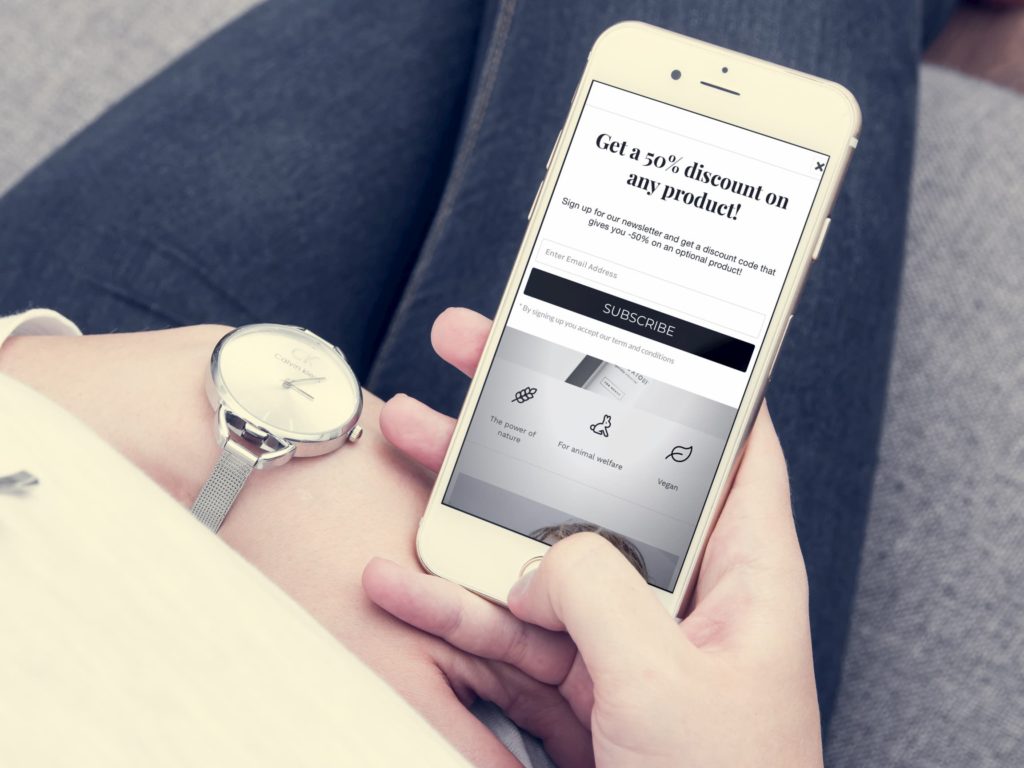
Notes from a recent webinar on signup strategies from Sleeknote and Hello Retail. Watch the whole webinar here. These strategies and best practices is based on the entirety of Sleeknotes customers, and is therefore building upon an enormous amount of data (10.2 billion visitors according to their stats).
Number of input fields Conversion rate 1 3.2% 2 3.3% 3 1.1% 4 0.9% 5 0.8% Want to learn more? Sleeknote runs a very interesting blog, covering pretty much every aspect of creating successfull pop-up campaigns.
- Analysis of 13 signup pages

Summary
13 takeaways from 13 signup pages:
…and only use a handful of these at the same time. Most signup pages are deliberately very clean and simple.
Salesforce
Salesforce lets you “connect to your customers in a whole new way with the world’s #1 CRM platform.”
The signup page

Title, CTA text & color and background
Title Start your free trial today CTA text START MY FREE TRIAL CTA color Purple, #5457ff Background color Dark blue, 215CA0 Notes
- “No credit card required, no software to install.” Insuring the customer that signing up is hassle-free
- Show phone number for leads wanting to talk to an “expert”
- Displaying security/privacy certificates to build trust, DigiCert by Norton and TRUSTe by TrustArc
Sleeknote
Sleeknote lets you “Engage Your Visitors with On-Site Messages”
The signup page

Title, CTA text & color and background
Title Try Sleeknote for Free CTA text Create Free Account CTA color Purple, #5457ff Background color White/grey Notes
- 4 selling points: “all included” and “unlimited number…” + a sentence telling us that there is much more
- Number of customers from x countries, telling us they are a global company
- Also showcasing the logos of their biggest customers
- They highlight how long the trial is (7 days)
- No credit card required
Unbounce
Unbounce is a tool that helps you “Design Beautiful Landing Pages That Convert More”
The signup page

Title, CTA text & color and background
Title Create your (name of product) account CTA text Sign Up with Email CTA color Dark blue, #0033ff Background color White Notes
- Frequently asked questions section with the top 3 most common questions for the trial account
- 4 most important features of the selected plan, available by drop down
- Shows the price you need to pay after the free trial, price in green color to feel cheaper
- 2 certificates for building trust, indicating they are SSL secure and GDPR compliant
- The CTA color is actually a variable, not hard coded
- Easy changing of pricing plan
Hubspot
Hubspot “helps thousands of companies grow better every year.”
The signup form

Title, CTA text & color and background
Title Create your free account CTA text Next CTA color Orange #ff7a59 Background color White/blue Notes
- Very simple page, almost no information
- Company one-liner: “Hubspot helps thousands of companies grow better every year”
- “Free forever. No credit card needed”
- Reassuring that they are committed to protecting your privacy
ClickFunnels
ClickFunnels: “Enabling People To Grow Their Companies Through Sales Funnels”
The signup page

Title, CTA text & color and background
Title ClickFunnels: Enabling People To Grow Their Companies Through Sales Funnels CTA text Start Building My First Funnel! CTA color Blue #036eeb Background color White Notes
- Their main selling point is very clear
- Long quote from a happy customer
- It is obvious how many steps there are left to complete the signup process
- Emphasise “FREE” 14 day trial
- Makes it easy to sign up: “No contracts. Downgrade or cancel your account anytime with a single click from your dashboard”
Splunk
Splunk “makes it simple to collect, analyze and act upon the untapped value of the big data generated by your technology infrastructure, security systems and business applications”
The signup page

Title, CTA text & color and background
Title Name of product CTA text Create your account CTA color Purple/pink #E20082 Background color White Notes
- Good introduction text about what Splunk enables you to do
- 4 selling points focused on functionality, elaborated
Zapier
Zapier give you the tools to “automate your work”
The signup page

Title, CTA text & color and background
Title Join millions worldwide who automate their work using Zapier CTA text Sign Up CTA color Orange, #ff4a00 Background color White Notes
- Big, bold title and 3 most important selling points
- Builds trust by telling you Zapier have millions of users worldwide
- Specifies number of days in free trial
- 3 ways of signing up
Slack
Slack “brings the team together, wherever you are”
The signup page

Title, CTA text & color and background
Title Try Slack with your team, for free CTA text + Create a Slack Workspace CTA color White Background color White Notes
- No selling points
- Obviously a lot of users are trying to create workspaces even though their company already have one
Adobe
Adobe Creative Cloud is a “collection of 20+ apps and services for photography, design, video, web, UX and more”
The signup page

Title, CTA text & color and background
Title Start your free 7-day trial CTA text Start free trial CTA color Blue #0d66d0 Background color White/Light grey Notes
- Very simple layout
- Namedrops the 3 seemingly most popular apps (Photoshop, Illustrator and Adobe XD)
- 4 additional selling points in addition to the main product
- Specified pricing information
Mailchimp
Mailchimp lets you “Engage your customers. Build your brand.”
The signup page

Title, CTA text & color and background
Title Welcome to Mailchimp CTA text Sign Up CTA color Bluish green #007c89 Background color Light grey Notes
- Very little information except a great text: “Find your people. Engage your customers. Build your brand. Do it all with Mailchimp’s Marketing Platform.”
Twilio
Twilio lets you “Engage customers on any channel, any time.”
The signup page

Title, CTA text & color and background
Title Get started with a free Twilio account. No credit card required. CTA text Start your free trial CTA color Red #f22f46 Background color Red and blue, gradient Notes
- 7 most important selling points, focused on functionality
- Lots of colors
- Elegant design
- I want to push the red button
Atlassian/Jira
Atlassian “make tools like Jira and Trello that are used by thousands of teams worldwide.”
The signup page

Title, CTA text & color and background
Title Name of product CTA text Agree and sign up CTA color Blue #0052cc Background color White Notes
- Specifies “no credit card required”
- 4 benefits for the free account
Piesync
Piesync gives you the ability to “Keep you customer data in sync across all your business apps, two-ways and in real time.”
The signup page

Title, CTA text & color and background
Title Connect your apps. Empower your business. CTA text Next CTA color Blue #006be6 Background color Bluish grey Notes
- 3 selling points, one for functionality and two for purchase decision
- One customer testimonial
- Highlights free trial duration twice
- No credit card required
If you appreciated this post, you’ll probably also want to check out Sunsama’s brilliang welcome email series.
- The Blog Startup: Notes
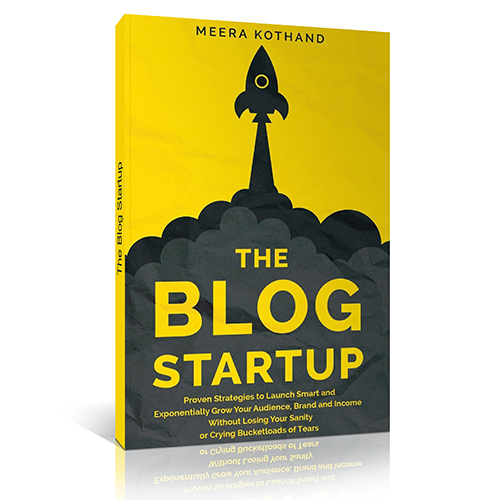
TLDR: Main takeaways
- To make money from your blog, you need to sell products or services. Ads is not enough
- Build your email list
- Define your niche/theme
- Define your ideal reader
- Mine forums, Facebook Groups, Amazon etc for content ideas
- Map out your readers journey
- Give every post an objective and map it to the readers journey
- Be creative with opt-in incentives
Notes on The Blog Startup
In march 2019, over 4.4 million blog posts were published every day. Each minute, 380 websites are created. Why would someone read your blog when there are millions out there? Why should they buy from you instead of someone else?
Blogs don’t make money
Many of us want to get started with internet marketing because we’re fascinated with all the golden promises we’ve heard, intrigued by those income reports we’ve read, and want to scratch that itch of “Can I really make money online?”
But unless you use ads as a monetization strategy, blogs don’t make money. Businesses do. Your blog is not a business. It would be really difficult and you would need a huge amount of traffic to be able to make money from the ads alone on your blog. So when people say, “My blog makes 10k a month,” they have a solid business in the background working for them. They have a business model. They have their core or brand that is responsible for attracting people to them.
There are two ways to approach blogging when you’re starting out.
In method 1, you start with no product or service and create content to attract, grow, and nurture your audience. Your blog serves as a content hub to get people in the door.
In method 2, you have existing products and services and your blog serve to support your business.Nail your lucrative niche
Niche is probably the most loathed word in your vocabulary right now. You’ve probably seen interconnected circles, taken quastionnaires about your passion and interests, and still circled back to where you started – with nothing to show for it.
The real reason you’re not able to pick a niche is that you’re afraid to commit. You’re afraid that you’ll go down the wrong path and waste all this time (and maybe even money) starting something that you realize later is not working. Nailing down your niche can seem like this immensely critical decision that can make or brake your site.
Here are some myths you may have heard about niches:
- If there are big, established blogs in a niche, stay away from it
- If you don’t have enough experience and knowledge in the niche, don’t even attempt it
- Your niche has to be original
If there are several blogs in a niche, that niche is crowded. But it also means that there is validation of an existing audience out there for your blog.
Those big blogs may take a chunk of your audience, but not everyone will resonate with the voice and style of the big blogs. That’s the reason several blogs are able to thrive alongside each other. Remember that people are more likely to be influenced by someone they like and can relate to – someone who’s at a level that seems attainable. The pie is big enough for all of us.
Think of your blog in terms of the problem it solves. In its essence, a niche is a solution to a problem. People want to be better versions of themselves.
The missing puzzle pieces that people don’t consider before they pick a niche are:
- Are there others in this niche who are serving a similar audience (big or small) who have the same problem or pain points that you want to help sove
- Effectively monetizing their sites
Who is participating in the conversation in this niche? Make a list of these people. Take note of their biz models: How are they monetizing their blogs? If you see that people are paying to get rid of pain or to gain something, then there’s certainly potential in that niche. You’re looking for signs of money flows in the niche. This could be via digital products, coaching, services, events, or even physical products.
Your niche needs to have recurring income potential. You don’t want to solve a problem that people only seek help for once. You want a niche where people have the opportunity to advance and fulfill their potential at various stages. How can they solve pain points of various intensities as they progress?
What if I can’t see myself talking about a single topic?
There are lots of lifestyle blogs that make good money. But you do need to bring your topics under one overarching theme or topic. What is your main message to your audience? What is the one thing you want them to take away? What message combines your different topics?Pick a message, keep it at the center, and then work out your value proposition. Keep drilling that in and your audience will understand what you have on offer compared to when you try to explain five other things at the same time.

Your one reader
By defining who exactly your ideal reader is, you’ll be able to:
- Talk to your audience at the right level
- Not waste your effort writing for people who will never enjoy or gel with your content
- Not scratch your head thinking about what content to create because you know exactly what your audience needs
Pshychographics:
- What frustrates them?
- What worries do they have?
- What websites do they visit?
- What blogs do they read?
- What other hobbies or interests do they have?
- What social media channels do they hang out on?
- What mental block do they have to overcome?
- What is preventing your ideal reader from achieving the desired outcome?
Motivation factors:
- What do they desire, want, and aspire to?
- What are their fears, frustrations, and challenges?
- What do they want to achieve in the next three years?
Mine for information
Join Facebook groups where your ideal audience members are likely to hang out. Find out what questions they are asking and what pain points they have. Other places you can mine for information on your ideal reader are Amazon, Udemy, and Product Hunt to name a few.
The more you alienate people, the more you attract your own kind of people too
The reader journey
What keeps my audience stuck in this phase and what do they need from me and my content to move forward? Create different pieces of content to fuel the reader journey.
For instance, let’s take the example of a single mom who wants to start a virtual assistant (VA) business. Here are some topics that I came up with for readers who are at different stages:
- Why a VA business is perfect for moms and why you need to start one today (problem unaware)
- 13 things holding you back from launching your VA business (problem aware)
- Think you have no skills to start a VA business? Think again. Here’s why you may be perfect for the role (solution unaware)
- How this mom makes $10K a month form her VA business (desire)
- The only e-book you need to start your VA business in 10 days flat (action and implementation)
Determine the purpose of the post
Always determine how each piece of content is going to fit into your entire blog and business. Ask yourself what’s the goal of the post. What do you want each post to do? When you write with the end in mind, you know what the post is meant to do based on the tangible and intangible goals you set beforehand.
Tangible goals:
- Drive opt-ins to gauge interest for a product
- Get opt-ins and then lead them down a sequence to a paid product
- Make an affiliate commission
- Pitch a sponsored post
- Educate your reader
Intangible goals:
- Position yourself as an expert or thought leader
- Network with influencers
- Empower your readers
- Entertain with personal stories
Opt-in incentives
The easiest way to grow your email list is to offer an opt-in incentive or lead magnet. Examples:
- Swipe files
- Cheat sheets
- Tool kits
- How-to guides
- Exclusive access to membership/Facebook groups
- Test/Quiz/Assessment
- Webinar
- Bite-sized email series
- Free assessment
- Free consult
- Coupons
- Loyalty program
The thank you page
The thank you page is your opportunity to wow your readers. Here are som elements you could include:
- A picture of you
- Clear instructions on what they should do next
- Your social media links
- A request to share your site or freebie
- Links to your best content
- Testimonials from your readers
- A personality (the most important thing!)
Links to a selection of Meera’s books on Amazon
Personal review
I had hoped it would be a little more advanced with more insights and tips. But hey, I understand that this is meant for people who are just starting out, and from a newcomers perspective I believe it is a okay introduction. It does contain several actionable tips & tricks, and I got inspired on some of the chapters. It is also a very easy read. The book is short and the text is very big, so you’ll be rushing through it in no time. I appreciate books that are just as long as they need to be.
Rating: 5/10
- The Obesity Code: Notes
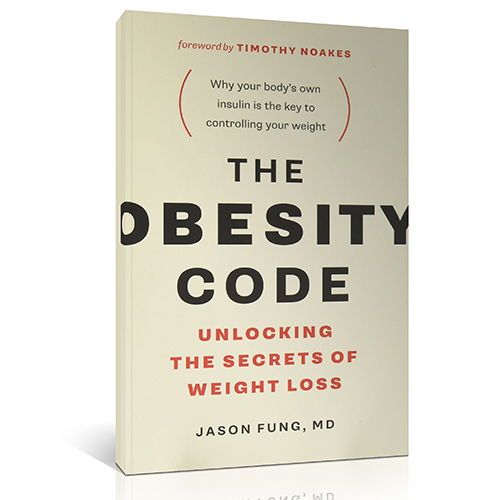
TLDR: Main takeaways
- Insulin drives weight-gain
- Reduce your consumption of added sugars
- Reduce your consumption of refined grains
- Moderate your protein consumption
- Increase your consumption of natural fats
- Increase your consumption of fiber and vinegar
- Use intermittent fasting
- A lot of todays nutritional “truths” are based on very little or shaky scientific backing
Notes on The Obesity Code
The art of medicine is quite peculiar. Once in a while, medical treatments become established that don’t really work. Through sheer inertia, these treatments get handed down from one generation of doctors to the next and survive for a surprisingly long time, despite their lack of effectiveness.
In the science of nutrition, there is rarely any consensus about anything:
- Dietary fat is bad. No dietary fat is good. There are good fats and bad fats.
- Carbohydrates are bad. No, carbohydrates are good. There are good carbs and bad carbs.
- You should eat more meals a day. No, you should eat fewer meals a day.
Evidence-based medicine does not mean taking every piece of low-quality evidence at face value. I often read statements such as “low-fat diets proven to completely reverse heart disease.” The reference will be a study of five rats.
The parable of the cow
Two cows were discussing the latest nutritional research, which had been done on lions. One cow says to the other, “Did you hear that we’ve been wrong these last 200 years? The latest research shows that eating grass is bad for you and eating meat is good.” So the two cows began eating meat. Shortly afterward, they got sick and died.
Causal factors vs association studies
It is dangerous to assume that because two factors are associated, one is the cause of the other. Witness the hormone replacement therapy disaster in post-menopausal women. Hormone replacement therapy was associated with lower heart disease, but that did not mean that it was the cause of lower heart disease. However, in nutritional research, it is not always possible to avoid association studies, as they are often the best available evidence.
Of all the parasites that affect humanity, I do not know of, nor can I imagine, any more distressing than that of obesity
William BantingFat doctors
Here’s the question that has always bothered me: Why are there doctors who are fat? Accepted as authorities in human physiology, doctors should be true experts on the causes and treatments of obesity. Most doctors are also very hardworking and self-diciplined. Since nobody wants to be fat, doctors in particular should have both the knowledge and the dedication to stay thin and healthy. So why are there fat doctors?
The standard prescription for weight loss is “Eat less, move more.” It sounds perfectly reasonable, but why doesn’t it work?The demonization of dietary fat
The increase in life expectancy from 1900 to 1950 reinforced the perception of a coronary disease epidemic. For a white male, the life expectancy in 1900 was fifty years. By 1950, it had reached sixty-six years, and by 1970, almost sixty-eight years. If people were not dying of tuberculosis, then they would live long enough to develop their heart attack. Currently, the average age at first heart attack is sixty-six years. The risk of a heart attack in a fifty-year-old man is substantially lower than in a sixty-eight-year-old man. So the natural consequence of a longer life expectancy is an increased rate of coronary disease.
But all great stories need a villain, and dietary fat was cast into that role. Dietary fat was thought to increase the amount of cholesterol, a fatty substance that is thought to contribute to heart disease, in the blood. Soon, physicians began to advocate lower-fat diets. With great enthusiasm and shaky science, the demonization of dietary fat began in earnest.
There was a problem, though we didn’t see it at the time. The three macronutrients are fat, protein and carbohydrates: lowering dietary fat meant replacing it with either protein or carbohydrates. Since many high-protein foods like meat and dairy are also high in fat, it is difficult to lower fat in the diet without lowering protein as well.
So, if one were to restrict dietary fats, then one must increase dietary carbohydrates and vice versa. In the developed world, these carbohydrates all tend to be highly refined. Low fat = high carbohydrate.
This dilemma created significant cognitive dissonance. Refined carbohydrates coult not be simultaneously be both good (because they are low in fat) and bad (because they are fattening). The solution adopted by most nutrition experts was to suggest that carbohydrates were no longer fattening. Instead, calories were fattening. Without evidence or historical precedent, it was arbitrarily decided that excess calories caused weight gain, not specific foods. Fat, as the dietary villain, was now deemed fattening – a previously unknown concept. The calories-in/calories-out model began to displace the prevailing “fattening carbohydrates” model.
The issue was finally settled in 1977, not by scientific debate and discovery, but by governmental decree. George McGovern, then chairman of the United States Senate Select Committee on Nutrition and Human Needs, convened a tribunal, and after several days of deliberation, it was decided that henceforth, dietary fat was guilty as charged. Not only was dietary fat guilty of causing heart disease, but it also caused obesity, since fat is calorically dense.
The resulting declaration became the Dietary Goals for the United States. An entire nation, and soon the entire world, would now follow nutritional advice from a politician. This was a remarkable break from tradition. For the first time, a government institution intruded into the kitchens of America. Mom used to tell us what we should and should not eat. But from now on Big Brother would be telling us. And he said, “Eat less fat and more carbohydrates.”The food pyramid
The Dietary Guidelines for Americans, now updated every five years, spawned the infamous food pyramid in all its counterfactual glory. The foods that formed the base of the pyramid – the foods we should eat every single day – were breads, pastas and potatoes. These were the prceise foods that we had previously avoided to stay thin. For example, the American Heart Association’s 1995 pamphlet, The American Heart Association Diet: An Eating Plan for Healthy Americans, declared we should eat six or more servings of “breads, cereals, pasta and starchy vegetables that are low in fat and cholesterol.” To drink, “Choose fruit punches, carbonated soft drinks.” Ahhh. White bread and carbonated soft drinks – the dinner of champions. Thank you, American Heart Association.
Success!
Refined grain consumption increased by almost 45 percent. Since carbohydrates in North America tended to be refined, we ate more and more low-fat bread and pasta, not cauliflower and kale.
Success! From 1976 to 1996, the average- fat intake increased from 45 percent of calories to 35 percent
- Butter consumption decreased 38 percent
- Animal protein decreased 13 percent
- Egg consumption decreased 18 percent
- Grains and sugars increased
There is no survival advantage to carrying a very high body-fat percentage. A male marathon runner may have 5 to 11 percent body fat. This amount provides enough energy to survive for more than a month without eating.
Is a calorie a calorie?
“A calorie is a calorie” implies that the only important variable in weight gain is the total caloric intake, and thus, all foods can be reduced to their caloric energy. But does a calorie of olive oil cause the same metabolic response as a calorie of sugar? The answer is, obviously, no. These two foods have many easily measurable differences. Sugar will increase the blood glucose level and provoke an insulin response from the pancreas. Olive oil will not. When olive oil is absorbed by the small intestine and transported to the liver, there is no significant increase in blood glucose or insulin. The two foods evoke vastly different metabolic and hormonal responses.
How do we process food?
What is a calorie? A calorie is simply a unit of energy. Different foods are burned in a laboratory, and the amount of heat released is measured to determine a caloric value for that food. All the foods we eat contain calories. Food first enters the somach, where it is mixed with stomach acid and slowly released into the small intestine. Nutrients are extracted throughout the journey through the small and large intestines. What remains is excreted as stool. Proteins are broken down into their building blocks, amino acids. These are used to build and repair the body’s tissues, and the excess is stored. Fats are directly absorbed into the body. Carbohydrates are broken down into their building blocks, sugars. Proteins, fats and carbohydrates all provide caloric energy for the body, but differ greatly in their metabolic processing. This results in different hormonal stimuli.
Caloric reduction is not the primary factor in weight loss
The correlation between weight gain and the increase in calorie consumption has recently broken down. Data from the National Health and Nutrition Examination Survey in the United States from 1990 to 2010 finds no association between increased calorie consumption and weight gain. While obesity increased at a rate of 0.37 percent per year, caloric intake remained virtually stable. Women slightly increased their average daily intake from 1761 to 1781, but men slightly decreased theirs from 2616 to 2511.
If we eat an extra 200 calories today, nothing prevents the body from burning that excess for heat. Or perhaps that extra 200 calories is excreted as stool. Or perhaps the liver uses the extra 200. We obsess about caloric input into the system, but output is far more important.
Reducing calories in works only if calories out remains stable. What we find instead is that a sudden reduction of calories in causes a similar reduction in calories out, and no weight is lost as the body balances its energy budget. Some historic experiments in calorie reduction have shown exactly this.
(In this experiment) thirty-six young, healthy, normal men were selected. For the first three months, subjects received a standard diet of 3200 calories per day. Over the next six months of semi-starvation, only 1570 calories were given to them. However, caloric intake was continually adjusted to reach a target total weight loss of 24 percent, averaging 1.1 kg per week. Some eventually received less than 1000 calories per day.
Even (the professor initiating the study) was shocked by the difficulty of the experiment. The men experienced profound physical and psychological changes. Among the most consistent findings was the constant feeling of cold experience by the participants.
Resting metabolic rate dropped by 40 percent. Measurement of the subjects strength showed a 21 percent decrease. Heart rate slowed considerably, from an average of fifty-five beats per minute to only thirty-five. Heart stroke volume decreased by 20 percent. Body temperature dropped to 35.4 degrees. Physical endurance dropped by half. Blood pressure dropped. Men became extremely tired and dizzy. They lost hair and their nails grew brittle. Psychologically, there were equally devastating effects. The men experienced a complete lack of interest in everything except for food.The body reacts in this way – by reducing energy expenditure – because the body is smart and doesn’t want to die. What would happen if the body continued to expend 3000 calories daily while taking in only 1500? Soon fat stores would be burned, then protein stores would be burned, and then you would die. Nice. The smart course of action for the body is to immediately reduce caloric expenditure to 1500 calories per day to restore balance. Caloric expenditure may even be adjusted a little lower to create a margin of safety. This is exactly what the body does.
With reflection, it should immediately be obvious that caloric expenditure must decrease. If we reduce daily calorie intake by 500 calories, we assume that 0.45 kg of fat per week is lost. Does that mean that in 200 weeks, we would lose 91 kg and weigh zero kg? Of course not. The body must, at some point, reduce its caloric expenditure to meet the lower caloric intake.
Doctor’s orders
The applicability of these findings to caloric-reduction diets is obvious. Assume that prior to dieting, a woman eats and burns 2000 calories per day. Following doctor’s orders, she adopts a calorie-restricted portion-controlled, low-fat diet, reducing her intake by 500 calories per day. She feels lousy, tired, cold, hungry, irritable and depressed, but sticks with it, thinking that things must eventually improve. Initially, she loses weight, but as her body’s caloric expenditure decreases to match her lowered intake, her weight plateaus. Her dietary compliance is good, but one year later, things have not improved. Her weight slowly creeps back up, even though she eats the same number of calories. Tired of feeling so lousy, she abandons the failed diet and resumes eating 2000 calories per day. Since her metabolism has slowed to an output of only 1500 calories per day, all her weight comes rushing back – as fat. Those around her silently accuse her of lacking willpower. Sound familiar? But her weight regain is not her failure. Instead, it’s to be expected. Everything described here has been well documented over the last 100 years!
Caloric reduction and portion-control strategies only make you tired and hungry. Worst of all, you regain all the weight you have lost.
Glycogen
Glycogen is easily available, but in limited supply. During a short-term fast, your body has enough glycogen available to function. During a prolonged fast, your body can make new glucose from its fat stores – a process called gluconeogenesis (the “making of new sugar”). Fat is burned to release energy, which is then sent out to the body – the fat-storage process in reverse.
This situation partially explains the difficulty in losing accumulated fat. Before getting money from the bank, you spend what’s in your wallet first. But you don’t like having an empty wallet. In the same manner, before getting energy from the Fat Bank, you spend the energy in the Glycogen Wallet. But you also don’t like an empty Glycogen Wallet. So you keep the Glycogen Wallet filled, which prevents you from accessing the Fat Bank. In other words, before you can even begin to burn fat, you start feeling hungry and anxious because your glycogen is becoming depleted. If you continually refill your glycogen stores, you never need to use you fat stores for energy.
Insulin
Under normal conditions, high insulin levels encourage sugar and fat storage. Low insulin levels encourage glycogen and fat burning. Sustained levels of excessive insulin will tend to increase fat storage. An imbalance between the feeding and fasting will lead to increased insulin, which causes increased fat, and voilà – obesity. Could insulin be the hormonal regulator of body weight?
Certainly, the insulin response differs greatly between lean and obese patients. Obese patients tend to have a higher fasting insulin level, as well as an exaggerated insulin response to food. It is possible that this hormonal activity leads to weight gain.
Insulin can make you fat
In a fascinating 1993 study, high-dose insulin allowed virtual normalization of blood sugars in a group of type 2 diabetic patients. Starting from zero, the dose was increased to an average of 100 units per day over a period of six months. At the same time, patients decreased their caloric intake by more than 300 calories per day.
The patients’ blood sugar levels were great. But what happened to their weight? It increased by an average of 8.7 kg! Despite eating less than ever, patients gained weight like crazy. It wasn’t calories that drove their weight gain. It was insulin.Insulin can make you thin
If insulin causes weight gain, can lowering its levels have the opposite effect? Type 1 diabetes is an autoimmune disease that destroys the insulin-producing beta cells of the pancreas. Type 1 diabetes has been descibred since ancient times. Arataeus of Cappadocia, a renowned ancient Greek pysician, wrote this classic description: “Diabetes is a melting down of flesh and limbs into urine.” No matter how many calories the patient ingests, he or she cannot gain any weight. Until the discovery of insulin, this disease was almost universally fatal.
Insulin levels go waaayyy down. Patients lose a lot of weight. In the type 1 diabetic community, there is a disorder called “diabulimia.” Diabulimia is the deliberate under-dosing of insulin for the purpose of immediate and substantial weight loss. It is extremely dangerous and certainly not advisable. However, the practice persist because it is an extremely effective form of weight loss.
Insulin levels go down. Weight is lost.
The results are very consistent. Drugs that raise insulin levels cause weight gain. Drugs that have no effect on insulin levels are weight neutral. Drugs that lower insulin levels cause weight loss. The effect on weight is independent of the effect on blood sugar.
Hormones
Hormones tell us we are hungry (ghrelin). Hormones tell us we are full (peptide yy, cholecystokinin). Hormones increase energy expenditure (adrenalin). Hormones shut down energy expenditure (thyroid hormone). Obesity is a hormonal dysregulation of fat accumulation. Calories are nothing more than the proximate cause of obesity.
Obesity is a hormonal, not a caloric imbalance.
Both fasting insulin and fasting leptin levels are higher in obese people, indicating a state of both insulin and leptin resistance. The leptin response to a meal was also different. In lean people, leptin levels rose – which makes sense, as leptin is a satiety hormone. However, in obese subjects, leptin levels fell. Despite the meal, their brains were not getting the message to stop eating.
Understanding how to treat obesity
Once we understand that obesity is a hormonal imbalance, we can begin to treat it. If we believe that excess calories cause obesity, then the treatment is to reduce calories. But this method has been a complete failure. However, if too much insulin causes obesity, then it becomes clear we need to lower insulin levels.
The question is not how to balance calories; the question is how to balance our hormones. The most crucial question in obesity is how to reduce insulin.Cortisol
Once released, cortisol substantially enhances glucose availability, which provides energy for muscles – very necessary in helping us to run and avoid being eaten. All available energy is directed toward surviving the stressful event. Growth, digestion and other long-term metabolic activities are temporarily restricted. Proteins are broken down and converted to glucose .
At first glance, cortisol and insulin appears to have opposite effects. Insulin is a storage hormone. Under high insulin levels (mealtimes), the body stores energy in the form of glycogen and fat. Cortisol, however, prepares the body for action, moving energy out of stores and into readily available forms, such as glucose. That cortisol and insulin would have similar weight-gain effects seems remarkable – but they do. With short-term physical stress, insulin and cortisol play opposite roles. Something quite different happens, though, when we’re under long-term psychological stress.
In our modern-day lives, we have many chronic, nonphysical stressors that increase our cortisol levels. For example, marital issues, problems at work, arguments with children and sleep deprivation are all serious stressors, but they do not result in the vigorous physical exertion needed to burn off the blood glucose. Under conditions of chronic stress, glucose levels remain high and there is no resolution to the stressor. Our blood glucose can remain elevated for months, triggering the release of insulin. Chronically elevated cortisol leads to increased insulin levels – as demonstrated by several studies.And so, by extension, stress causes weight gain – something that many people have intuitively understood, despite the lack of rigourous evidence. Stress contains neither calories nor carbohydrates, but can still lead to obesity. Long-term stress leads to long-term elevated cortisol levels, which leads to extra pounds.
Sleep
Sleep deprivation is a major cause of chronic stress today. Sleep duration has been steadily declining. In 1910, people slept nine hours on average. However, recently, more than 30 percent of adults between the age of thirty and sixty-four report getting fewer than six hours of sleep per night. Shift workers are especially prone to sleep deprivation and often report fewer than five hours of sleep per night.
Population studies consistently link short sleep duration and excess weight, generally with seven hours being the point where weight gain starts. Sleeping five to six hours was associated with a more than 50 percent increased risk of weight gain. The more sleep deprivation, the more weight gained.Getting enough sleep is essential to any weight loss plan.
The empire strikes back
The American Heart Association (AHA) published its own book called the No-Fad Diet: A personal Plan for Healthy Weight Loss. It’s only mildly ironic that while condemning other diets, the AHA would recommend the only diet (low-fat) repeatedly proven to fail. But the low-fat religion was enshrined in the medical community and it did not tolerate disbelievers.
No concern that higher intake of sugar and other refined carbohydrates could be harmful. No concern that the low-fat diet had been proved a spectacular failure by every dietary study done. No concern that obesity and diabetes epidemics were raging full force under their very noses. The AHA fiddled while Rome burned.
During the forty years that the AHA advised a low-fat diet, the obesity crisis grew to gargantuan proportions. Yet no time did the AHA question whether their completely ineffectual advice was actually helping people. Instead, doctors played their favorite game: blame the patient. It is not our fault the diet doesn’t work. It is their fault for not following the diet.
It is now increasingly recognized that the low-fat campaign has been based on little scientific evidence and may have caused unintended health consequences
Harvard researchers DRS. Frank Hu & Walter Willett, 2001Cholesterol
The liver manufactures the overwhelming majority -80 percent- of the blood cholesterol, with only 20 percent coming from diet. Cholesterol is often portrayed as some harmful poisonous substance that must be eliminated, but nothing could be farther from the truth. Cholesterol is a key building block in the membranes that surround all the cells in our body. In fact, it’s so vital that every cell in the body except the brain has the ability to make it. If you reduce cholesterol in your diet, your body will simply make more.
Addictive food
Let us assume we’re at a all-you-can-eat buffet. At some point, you simply cannot eat any more, and the idea of consuming two more pork chops is sickening. That feeling is your satiety hormones telling you that you’ve had enough. But what if you were offered a small slice of cake or apple pie? Doesn’t seem so hard to eat now, does it? As kids, we used to call this the second-stomach phenomenon: after the first stomach for regular food was full, we imagined that there was a second one for desserts. Somehow, despite being full, we still have room for highly refined carbohudrates like cake and pie – but not proteins or fats. Highly refined and processed foods somehow do not trigger the release of satiety hormones, and we go ahead and eat cake.
Think about foods that people say they’re “addicted” to. Pasta, bread, cookies, chocolate, chips. Notice anything? All are highly refined carbohydrates. Does anybody ever say they are addicted to fish? Apples? Beef? Spinach? Not likely. Those are all delicious foods, but not addictive.
Refined carbohydrates are easy to become addicted to and overeat precisely because there are no natural satiety hormones for refined carbs. The reason is that refined carbohydrates are not natural foods but are instead highly processed. Their toxicity lies in that processing.
Unrefined carbohydrates are different
Dr Staffan Lindeberg studied the residents of Kitava, one of the Trobriand Islands in Papua New Guinea – one of the last places on earth where poeple ate a largely traditional diet. Starchy vegetables, including yam, sweet potato, taro and cassava, made up the basis of their diet. An estimated 69 percent of calories were derived from carbohydrates, and less than 1 percent of the calories came from processed Western foods.
Despite this high carbohydrate intake, insulin was very low among the Kitavans, resulting in virtually no obesity. Comparing the Kitavans to his native Swedish population, Dr. Lindeberg found that despite a diet that was 70 percent carbohydrates (unrefined), the Kitavans had insulin levels below the 5th percentile of Swedes. The body mass index of young Kitavans averaged 22 (normal) and it decreased with age.
Similarly, natives of the Japanese island of Okinawa eat a diet that is nearly 85 percent unrefined carbohydrates. The dietary staple is sweet potato. They eat three times as many green and yellow vegetables, but only 25 percent of the sugar consumed by residents of nearby Japan. Despite the high intake of carbohydrates, there is virtually no obesity, and the average body mass index is only 20.4. They are one of the longest-lived people in the world, with more than triple the rate (compared to nearby Japan) of people living past 100 years.
Homeostasis
In his 1945 Nobel lecture, “Penicillin,” Dr. Fleming correctly predicted the emergence of resistance:
“There is the danger that the ignorant man may easily underdose himself and by eposing his mocrobes to non lethal quantities of the drug make them resistant. Here is a hypothetical illustration: Mr. X has a sore throat. He buys some penicillin and gives himself, not enough to kill the streptococci but enough to educate them to resist penicillin.
By 1947, the first cases of antibiotic resistance were reported. How did Dr. Fleming so confidently predict this development? He understood homeostasis. Exposure causes resistance. A biological system that becomes disturbed tries to go back to its original state. As we use an antibiotic more and more, organisms resistant to it are naturally selected to survive and reproduce. Eventually, these resistant organisms dominate, and the antibiotic becomes useless.
(…) even using normal, physiologic levels of insulin will yield the exact same result. Men with no previous history of obesity, pre-diabetes or diabetes were given a ninety-six-hour constant intravenous infusion of insulin. By the end, their insulin sensitivity dropped by 20 percent to 40 percent. The implications are simply staggering. With normal but persistent amounts of insulin alone, these healthy, young, lean men can be made insulin resistant. I can start these men on the road to diabetes and obesity simply by administering insulin – which causes insulin resistance.
The main compartments are the brain, liver and muscle. Changing the resistance of one does not change resistance in the others. For example, hepatic (liver) insulin resistance does not affect insulin resistance in the brain or muscle. When we ingest excess carbohydrates, we develop hepatic insulin resistance. Significant dietary intervention will reverse the hepatic insulin resistance, but will have no effect on insulin resistance in the muscles or the brain. Lack of exercise may lead to insulin resistance in the muscles. Exercise will increase insulin sensitivity there, but has little effect on insulin resistance in the liver or brain.
Whenever the body is exposed to a constant stimulus, it acclimates to it
When we eat
In the development of obesity, the increase in meals is almost twice as important as the change in diet. We obsess about what we should eat, all in the hopes of making us slim. But we spare not even a single thought as to when we should be eating.
Eating six small meals per day causes the metabolic rate to go up six times a day, but only a little.
One myth is that eating frequently keeps blood glucose from becoming too low. But unless you have diabetes, your blood sugars are stable whether you eat six times a day or six times a month.
We are eating all the time. Societal norms, which had previously frowned upon eating except at mealtimes, now permit eating anywhere, anytime. Government agencies and schools actively encourage snacking, something that previously had been heavily discouraged. We are taught to eat the minute we roll out of bed. We are taught to eat throughout the day and eat again just before sleep. We spend up to eighteen hours in the insulin-dominant state, with only six hours insulin deficient.
Crazier still – we have been brainwashed to believe that constant eating is somehow good for us! Not just acceptable, but healthy.
Indeed, many health professionals have been very vocal about increasing the number of eating occasions. This situation is just as crazy as it sounds. Eat more to weigh less. That doesn’t even sound like it will work. And guess what? It doesn’t.
Big Food
Big Food sponsors many large nutritional organizations. And then there are the medical associations. In 1988, the American Heart Association decided that it would be a good idea to start accepting cash to put its Heart Check symbol on foods of otherwise dubious nutritional quality. The Center for Science in the Public Interest estimates that in 2002, the AHA received over $2 million from this program alone. Food companies paid $7500 for one to nine products, but there was a volume discount for more than twenty-five products! Exclusive deals were, of course, more expensive. In 2009, nutritional standouts such as Cocoa Puffs and Frosted Mini Wheats were still on the Heart Check list.
Funding sources
Funding sources have enormous influence on study results. In a 2007 study that looked specifically on soft drinks, Dr. David Ludwig from Harvard University found that accepting funds from companies whose products are reviewed increased the likelihood of a favorable result by approximately 700 percent!
The scapegoat: Calories
The obesity epidemic couldn’t very well be ignored, and a culprit had to be found. “Calories” was the perfect scapegoat. Eat fewer calories, they said. But eat more of everything else. There is no company that sells “Calories,” nor is there a brand called “Calories.” There is no food called “Calories.” Nameless and faceless, calories were the ideal stooge. “Calories” could now take all the blame. They say candy doesn’t make you fat. Calories does. They say that 100 calories of cola is just as likely as 100 calories of broccoli to make you fat. They say that a calorie is a calorie. But show me a single person that grew fat by eating too much steamed broccoli. I know it. You know it.
One of the worst myths is that eating more frequently causes weight loss. Eat snacks to lose weight? It sounds pretty stupid. And it is.
Obesity has begun to afflict younger and younger children. In one study covering a twenty-two-year period ending in 2001, children of all ages show an increased prevalence of obesity, even in the zero- to six-month-old age range. That finding is especially interesting. Conventional calorie-based theories of obesity are unable to explain this trend. Obesity is considered an energy-balance problem, one of eating too much and exercising too little. Since six month-olds eat on demand and are often breastfed, it is impossible that they eat too much. Since they do not walk, it is impossible that they exercise too little. Similarly, birth weight has increased by as much as 200 grams over the last twenty-five years. The newborn cannot eat too much or exercise too little. What is going on here?
The sad but inescapable conclusion is that we are now passing on our obesity to our children. Why? Because we are now marinating our children in insulin starting in the womb, they develop more severe obesity sooner than ever before. Because obesity is time dependent and gets worse, fat babies become fat children. Fat children become fat adults. And fat adults have fat babies in turn, passing obesity on to the next generation.
Several large-scale studies on prevention of childhood obesity were started in the late 1990s. (…) The specific nutritional goal was to reduce dietary fat to less than 30 percent (…) Did the children learn how to eat a low-fat diet? Sure did. Dietary fat started at 34 percent of calories and over the course of the study, fell to 27 percent. Did they eat fewer calories? Sure did. The intervention group averaged 1892 calories per day compared to 2157 calories per day in the control group. Fantastic! The children were eating 265 fewer calories per day. They learned their lessons extremely well, eating fewer calories and less fat overall. Over the course of three years, calorie counters expected a loss of approximately 37 kilograms! But did the children’s weight actually change? Not even by a little bit. It was the “largest school-based randomized trial ever conducted.” They ate less and exercised more. They just didn’t lose any weight.
Calories do not drive weight gain, and thus reducing them will not lead to weight loss.
Knowing that they were fighting a losing battle in North America and Europe, the sugar pushers took aim at Asia to make up for lost profits. Asian sugar consumption is rising at almost 5 percent per year. Things are shocking when you consider that only 1 percent of Chinese had type 2 diabetes in 1980. In a single generation, the diabetes rate rose by a horrifying 1160 percent. Sugar, more than any other refined carbohydrate, seems to be particularly fattening and leads to type 2 diabetes.
Diabetes correlates with sugar, not calories.
Breakfast
The majority of Americans identify breakfast as the most important meal of the day. Eating a hearty breakfast is considered a cornerstone of a healthy diet. Skipping it, we are told, will make us ravenously hungry and prone to overeat for the rest of the day. Although we think it’s a universal truth, it’s really only a North American custom. Many people in France (a famously skinny nation) drink coffee in the morning and skip breakfast.
It is simply not necessary to eat the minute we wake up. We imagine the need to “fuel up” for the day ahead. However, our body has already done that automatically. Every morning, just before we wake up, a natural circadian rhythm jolts our bodies with a heady mix of growth hormone, cortisol, epinephrine and adrenalin. This cocktail stimulates the liver to make new glucose, essentially giving us a shot of the good stuff to wake us up. This effect is called the dawn phenomenon, and it has been well described for decades.
Many people are not hungry in the morning. The natural cortisol and adrenalin released stimulates a mild flight-or-fight response, which activates the sympathetic nervous system.
Our bodies are gearing up for action in the morning, not for eating.
All these hormones release glucose into the blood for quick energy. We’re already gassed up and ready to go. There is simply no need to refuel with sugary cereals and bagels. Morning hunger is often a behavior learned over decades, starting in childhood.
A large breakfast is thought to reduce food intake throughout the rest of the day. However, such does not always seem to be the case. Studies show that lunch and dinner portions tend to stay constant, regardless of the amount of calories taken at breakfast. The more one eats at breakfast, the higher the total caloric intake over the entire day. Worse, taking breakfast increases the number of eating opportunities in a day. Breakfast eaters therefore tend to eat more and eat more often – a deadly combination.
Furthermore, many people confess that they are not hungry first thing in the morning and force themselves to eat only because they feel that doing so is the healthy choice. As ridiculous as it sounds, many people force themselves to eat more in an effort to lose weight.
(In a study) breakfast eaters averaged 539 extra calories per day compared to those that skipped breakfast – a finding consistent with other trials.
Breakfast is the most important meal of the day – for Big Food. Sensing the perfect opportunity to sell more highly profitable, highly processed “breakfast” foods, Big Food circled the easy money like sharks on wounded prey. “Eat breakfast!” they thundered. “It’s the most important meal of the day!” they bellowed. Even better, here was an opportunity to “educate” the doctors, dieticians and other medical professionals. Those people had a respectability Big Food could never achieve. So the money flowed.
There are some commonsense questions you can ask yourself about breakfast. Are you hungry at breakfast? If not, listen to your body and don’t eat. Does breakfast make you hungry? If you eat a slice of toast and drink a glass of orange juice in the morning – are you hungry an hour later? If so, don’t eat breakfast. If you are hungry and want to eat breakfast, then do so. But avoid sugars and refined carbohydrates. Skipping breakfast does not give you the freedom to eat a Krispy Kreme donut as a mid-morning snack either.
Our own disaster
Our own disastrous, misguided dietary changes since the 1970s have created the diabesity debacle. We have seen the enemy, and it is ourselves. Eat more carbohydrates. Eat more often. Eat breakfast. Eat more. Ironically, these dietary changes were prescribed to reduce heart disease, but instead, we’ve encouraged it since diabesity is one of the strongest risk factors for heart disease and stroke. We’ve been trying to put out a fire with gasoline.
Government policies
Despite the similarity in culture and genetics between populations in Canada and the United States, U.S rates of obesity are much higher. This fact suggests that government policies must play a role in the development of obesity.
Socioeconomic status has long been known to play a role in development of obesity in that poverty correlates very closely with obesity. States with the most poverty also tend to have the most obesity.
Financial aid
While mass production of corn and wheat receives generous support, the same cannot be said for cabbage, broccoli, apples, strawberries, spinach, lettuce and blueberries. Food additives receive almost thirty times more in subsidies. Saddest of all, apples receive the most, not the least, federal aid of all fruits and vegetables. All other receive negligible support.
Was this a giant conspiracy to keep us sick? Doubtful. The large subsidies were simply the result of programs to make food affordable, which began in the 1970s. Back then, the major health concern was not obesity, but heart disease that was believed to be the result of excess dietary fat. The base of the Food Pyramid, the foods to be eaten by us every day, was bread, pasta, potatoes and rice. Naturally, money flowed into subsidies for those foods, the production of which was encouraged by the U.S Department of Agriculture. Refined grains and corn products soon became affordable by all. Obesity followed like the grim reaper.
It is noteworthy that, in the 1920s, sugar was relatively expensive. A 1930 study showed that type 2 diabetes was far more common among the wealthier northern states compared to the poorer southern states. As sugar became extremely cheap, however, this relationship inverted. Now, poverty is associated with type 2 diabetes, rather than the other way around.
The second-stomach phenomenon
Removing protein and fat in the diet may lead to overconsumption. There are natural satiety hormones (peptide YY, cholecystokinin) that respond to protein and fat. Eating pure carbohydrate does not activate these systems and leads to overconsumption (the second-stomach phenomenon).
Nutritionism
A big problem was the inadvertent triumph of nutritionism. Rather than discussing individual foods (spinach, beef, ice cream), nutritionism reduced foods to only three macronutrients: carbohydrates, proteins and fats. They were then subdivided further as saturated and unsaturated fats, trans fats, simple and complex carbohydrates, etc. This sort of simplistic analysis does not capture the hundreds of nutrients and phytochemicals in foods, all of which affect our metabolism. Nutritionism ingnores the complexity of food science and human biology.
An avocado, for instance, is not simply 88 percent fat, 16 percent carbohydrate and 5 percent protein with 4.9 grams of fiber. This sort of nutritional reductionism is how avocadoes became classified for decades as a “bad” food due to their high fat content, only to be reclassified today as a “super food”. Nutritionally, a piece of butterscotch candy cannot be reasonably compared to kale simply because both contain equal amounts of carbohydrate.
Nutritionally, a teaspoon of trans-fat-laden margarine cannot be reasonably compared to an avocado simply because both contain equal amounts of fats.
Smarter than nature
We gave our children artificial baby formula. We drank artificially sweetened sodas. We thought we were smarter than Mother Nature. Whatever she had made, we could make better. Out with all-natural butter. In with industrially produced, artificially colored trans-fat-laden margarine! Out with natural animal fats. In with solvent-extracted, bleached and deodorized vegetable oil! What could possibly go wrong?
Fats
Saturated fats are so named because they are saturated with hydrogen. This makes them chemically stable. The polyunsaturated fats, like most vegetable oils, have “holes” where the hydrogen is “missing.” They are less stable chemically, so they have a tendency to go rancid and have a short shelf life. The solution was to create artificial trans fats.
Ironically, trans-fat-laden margarines had always branded themselves as heart healthy since they were low in saturated fat. Twenty-year follow-up data from the Framingham study revealed that margarine consumption was associated with more heart attacks. By contrast, eating more butter was associated with fewer heart attacks.
A comprehensive review of all the studies of high-fat dairy finds no association with obesity, with whole milk, sour cream and cheese offering greater benefits than low-fat dairy.
Eating fat does not make you fat, but may protect you against it
Eating fat together with other foods tends to decrease glucose and insulin spikes. If anything, dietary fat would be expected to protect against obesity.
While literally thousands of papers have reviewed this data, perhaps Dr. Walter Willett of the Harvard T.H. Chan School of Public Health said it best in his 2002 review article entitled, “Dietary Fat Plays a Major Role in Obesity: No.” Considered one of the world’s foremost experts in nutrition, he writes: “Diets high in fat do not account for the high prevalence of excess body fat in Western countries; reduction in the percentage of energy from fat will have no important benefits and could further exacerbate this problem. The emphasis on total fat reduction has been a serious distraction in efforts to control obesity and improve health in general.
The multifactorial nature of obesity
The multifactorial nature of obesity is the crucial missing link. There is no one single cause of obesity. Do calories cause obesity? Yes, partially. Do carbohydrates cause obesity? Yes, partially. Does fiber protect us from obesity? Yes, partially. Does insulin resistance cause obesity? Yes, partially. Does sugar cause obesity? Yes, partially. All these factors converge on several hormonal pathways that lead to weight gain, and insulin is the most important of these. Low-carbohydrate diets reduce insulin. Low-calorie diets restrict all foods and therefore reduce insulin. Paleo and LCHF diets (low in refined and processed foods) reduce insulin. Reduced-food-reward diets reduce insulin.
The truth is that there are multiple overlapping pathways that lead to obesity. The common uniting theme is the hormonal imbalance of hyper-insulinemia. For some patients, sugar or refined carbohydrates are the main problem. Low-carbohydrate diets may work best here. For others, the main problem may be insulin resistance. Changing meal timing or intermittent fasting may be the most beneficial. For others, the cortisol pathway is domimant. Stress reduction techniques or correcting sleep deprivation may be critical. Lack of fiber may be the critical factor for yet others.
Most diets attack one part of the problem at a time. But why? In cancer treatment, for example, multiple types of chemotherapy and radiation are combined together. The probability of success is much higher with a broad-based attack. In cardiovascular disease, multiple drug treatments work together. Treating high blood pressure does not mean ignoring smoking.
In cardiovascular disease, for example, “Choose the treatment that suits you” would never be considered satisfactory advice.
It is also important to tailor the approach individually to address the cause of the high insulin levels. For example, if chronic sleep deprivation is the main problem causing weight gain, then decreasing refined grains is not likely to help. If excessive sugar intake is the problem, then mindfulness meditation is not going to be especially helpful.
Obesity is a hormonal disorder of fat regulation. Insulin is the major hormone that drives weight gain, so the rational therapy is to lower insulin levels.
The steps to lower insulin levels
- Reduce your consumption of added sugars
- Reduce your consumption of refined grains
- Moderate your protein consumption
- Increase your consumption of natural fats
- Increase your consumption of fiber and vinegar
Coffee
Coffee, even the decaffeinated version, appears to protect against type 2 diabetes. In a 2009 review, each additional daily cup of coffee lowered the risk of diabetes by 7 percent, even up to six cups per day. The European Protective Investigation into Cancer and Nutrition study estimated that drinking at least three cups of coffee or tea daily reduced the risk of diabetes by 42 percent. The Singapore Chinese Health Study showed a 30 percent reduction in risk.
Coffee drinking is associated with a 10 to 15 percent reduction in total mortality. Large-scale studies found that most major causes of death, including heart disease were reduced. Coffee may guard against the neurologic diseases Alzheimer’s, Parkinson’s disease, liver cirrhosis and liver cancer.
A word of caution here: While these correlation studies are suggestive, they are not proof of benefit. However, they suggest that coffee may not be as harmful as we imagined.
Vinegar
Vinegar is also a protective factor. Used in many traditional foods, it may help reduce insulin spikes. Italians often eat bread dipped in oil and vinegar – a prime example of eating a high-carb food with protective factors. Vinegar is added to sushi rice, which reduces its glycemic index by 20 to 40 percent.
Fasting
While we obsess over the question of what to eat, we virtually ignore the crucial aspect of meal timing
To succeed, we must break the insulin-resistance cycle. But how? The body’s knee-jerk reaction to insulin resistance is to increase insulin levels, which, in turn, creates even more resistance. To break the cycle, we must have recurring periods of very low insulin levels.
We know that eating the proper foods prevents high levels, but it won’t do much to lower them. Some foods are better than others; nonetheless, all foods increase insulin production. If all foods raise insulin, then the only way for us to lower it is to completely abstain from food. The answer we are looking for, is fasting.
The ancient Greeks believed that medical treatment could be discovered by observing nature. Humans, like most animals, do not eat when they become sick. Consider the last time you were sick with the flu. Probably the last thing you wanted to was eat. Fasting seems to be a universal human response to multiple forms of illnesses and is ingrained in human heritage, as old as mankind itself. Fasting is, in a sense, an instinct.
The ancient Greeks believed that fasting improved cognitive abilities. Think about the last time you ate a huge Thanksgiving meal. Did you feel more energetic and mentally alert afterward? Or instead, did you feel sleepy and a little dopey? More likely the latter. Blood is shunted to your digestive system to cope with the huge influx of food, leaving less blood for brain function. Fasting does the opposite, leaving more blood for your brain.
The body’s response to fasting
Glucose and fat are the body’s main sources of energy. When glucose is not available, then the body adjusts by using fat, without any health detriment. This compensation is a natural part of life. Periodic food scarcity has always been part of human history, and our bodies have evolved processes to deal with this fact of Paleolithic life. The transition from the fed state to the fasted state occurs in several stages.
- Feeding: During meals, insulin levels are raised. This allows glucose uptake by tissues such as the muscle or brain for direct use as energy. Excess glucose is stored as glycogen in the liver.
- The post-absorptive phase (six to twenty-four hours after fasting starts): Insulin levels begin to fall. The breakdown of glycogen releases glucose for energy. Glycogen stores last for roughly twenty-four hours.
- Gluconeogenesis (twenty-four hours to two days): The liver manufactures new glucose from amino acids and glycerol. In non-diabetic persons, glucose levels fall but stay within the normal range.
- Ketosis (one to three days after fasting starts): The storage form of fat, triglycerides, is broken into the glycerol backbone and three fatty acid chains. Glycerol is used for gluconeogenesis. Fatty acids may be used directly for energy by many tissues in the body, but not the brain. Ketone bodies, capable of crossing the blood-brain barrier, are produced from fatty acids for use by the brain. Ketones can supply up to 75 percent of the energy used by the brain.
- Protein conservation phase (after five days): High levels of growth hormone maintain muscle mass and lean tissues. The energy for maintenance of basal metabolism is almost entirely met by the use of free fatty acids and ketones. Increased adrenalin levels prevent the decrease in the metabolic rate.
The human body is well adapted for dealing with the absence of food. Stored food (fat) is naturally released to fill the void. The body does not “burn muscle” in an effort to feed itself until all the fat stores are used. It’s crucial to note that alle these beneficial adaptive changes do not occur in the caloric-reduction diet strategy.
Regular fasting, by routinely lowering insulin levels, has been shown to significantly improve insulin sensitivity. This finding is the missing piece in the weight-loss puzzle.
Growth hormone
Growth hormone is known to increase the availability and utility of fats for fuel. It also helps to preserve muscle mass and bone density. Growth hormone secretion is difficult to measure accurately because of its intermittent release, but it decreases steadily with age. One of the most potent stimuli to growth hormone secretion is fasting. Over a five-day fasting period, growth hormone secretion more than doubles. The net physiological effect is to maintain muscle mass and bone tissue mass during the fasting period.
Myths about fasting
Many myths have been repeated so often that they are often perceived as infallible truths.
- Fasting will make you lose muscle/burn protein
- The brain needs glucose to function
- Fasting puts you in starvation mode/lowers basal metabolism
- Fasting will overwhelm you with hunger
- Fasting causes overeating when you resume feeding
- Fasting deprives the body of nutrients
- Fasting causes hypoglycemia
- It’s just crazy
If these myths were true, none of us would be alive today. Think about the consequences of burning muscle for energy.
Starvation mode
Starvation mode is the mysterious bogeyman always raised to scare us away from missing even a single meal. This is simply absurd. Breakdown of muscle tissue happens only at extremely low levels of body fat -approximately 4 percent- which is not something most people need to worry about. At this point, there is no further body fat to be mobilized for energy, and lean tissue is consumed. Fat is burned first.
This situation is akin to storing a huge amount of firewood but deciding to burn your sofa instead. It’s stupid. Why do we assume the human body is so stupid?
There is another persistent myth that brain cells require glucose for proper functioning. This is incorrect. Human brains, unique among animals, can use ketones as a major fuel source during prolonged starvation, allowing the conservation of protein such as skeletal muscle. Again, consider the consequences if glucose were absolutely necessary for survival: humans just wouldn’t survive. After twenty-four hours, glucose becomes depleted. If our brains had no alternative, we would become blubbering idiots as our brains shut down. Our intellect, our only advantage against wild animals, would begin to disappear. Fat is the body’s way of storing food energy for the long term; it uses glucose/glycogen for the short term.
Daily caloric restriction does, in fact, lead to decreased metabolism, so people assumed that this effect would be magnified as food intake dropped to zero. It won’t. Decreasing food intake is matched by decreased energy expenditure. However, as food intake goes to zero, the body switches energy inputs from food to stored food (fat). This strategy significantly increases the availability of “food,” which is matched by an increase in energy expenditure.
Appetite tends to decrease with increased duration of fasting
Can I exercise while fasting?
There is no reason to stop your exercise routine during fasting. There is a common misconception that eating is necessary to supply “energy” to the working body. That’s not true. The liver supplies energy via gluconeogenesis. During longer fasting periods, the muscles are able to use fatty acids directly for energy.
Links to a selection of Jason Fung’s books on Amazon
Personal review
As you can see by the massive amount of notes I took from this book, I thoroughly enjoyed it. Almost every page contain some form of eye-opening insights.
Rating: 9/10
PS: A new book by Jason Fung is coming this november, with a very interesting title: The Cancer Code. I’m looking forward to reading it.

